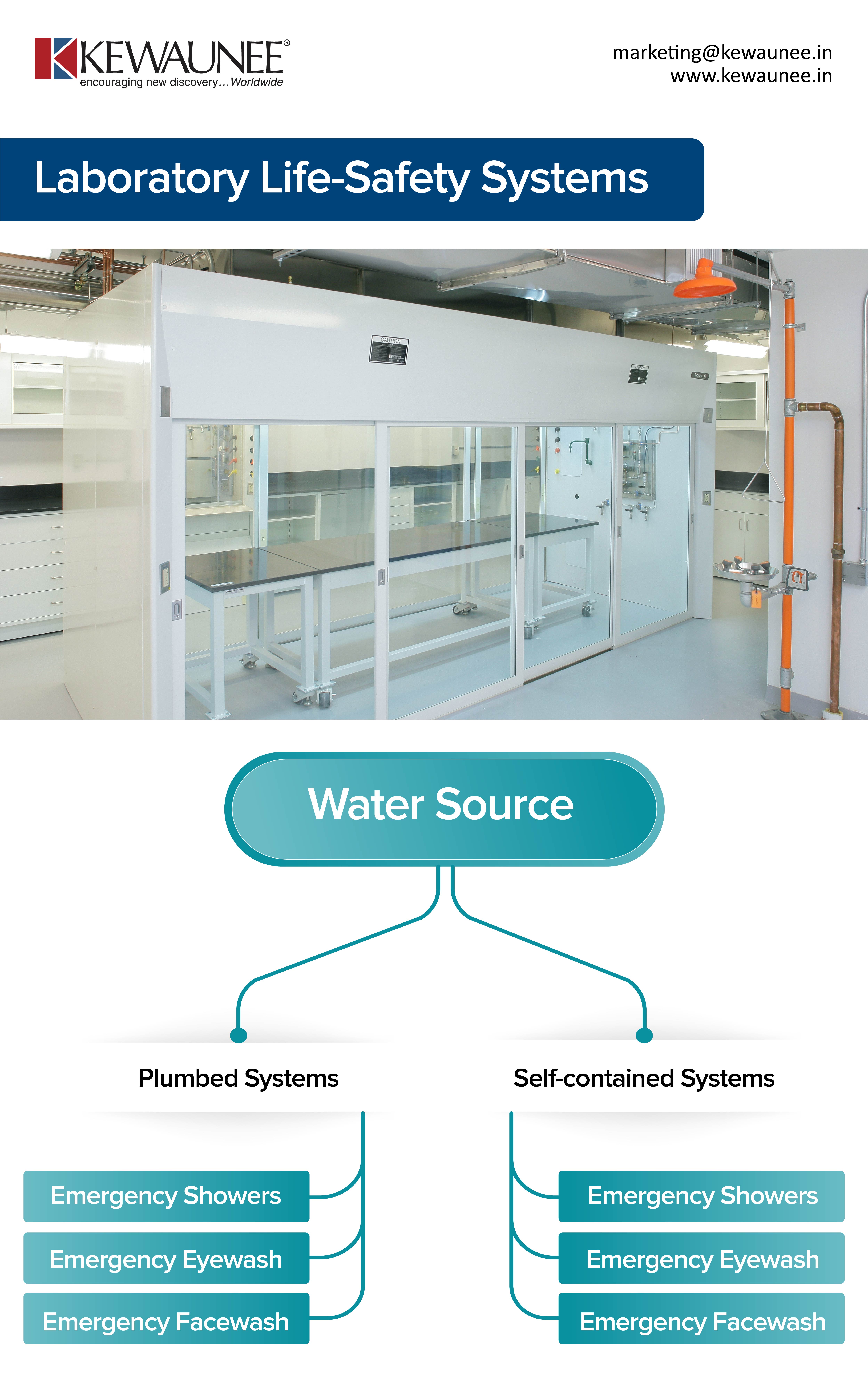Laboratory Life-Safety Systems
Pharmaceutical facilities often deal with toxic gases, liquids, and solids. Risk to the people safety always exist through accidental exposure and contact to these harmful agents.
As a first-aid measure in the event of an emergency, water-based life-safety systems are installed in the laboratories. The emergency drench-equipment systems, like emergency showers, drench hoses, and eye and face washes, are therefore located at critical places in a laboratory.
In this blog, let’s explore the emergency-drench system classifications and specifications as advised by American Society of Plumbing Engineers (ASPE) for Pharmaceutical facilities.
Drench Equipment Classification
Depending on the source of water, the emergency drench equipment are classified into two general types:
| Plumbed Systems | Self-contained Systems |
| Plumbed systems are connected to a permanent water supply. | Self-contained or portable equipment contains its own water supply. They can be either gravity feed or pressurised. |
Types of Drench Equipment
The various types of commonly used emergency drench equipment are showers, eyewash & facewash units, and drench hoses.
| Drench Equipment Type | Description |
|---|---|
| Emergency Showers | The emergency showers are intended to distribute water over a large area. They are of two types:
Emergency showers can be ceiling mounted, wall mounted, or floor mounted on a pipe stand. |
| Emergency Eyewash | Emergency eyewashes are designed to irrigate and flush both eyes simultaneously with dual streams of water. They are of two types:
The eyewash can be mounted on a counter or wall, or as a free-standing unit attached to the floor. |
| Emergency Face wash | The face wash is an enhanced version of the eyewash. It has the same design requirements and configuration, except the spray heads are specifically designed to deliver a larger water pattern and volume will flush the whole face and not just the eyes. |
Comments are closed.











